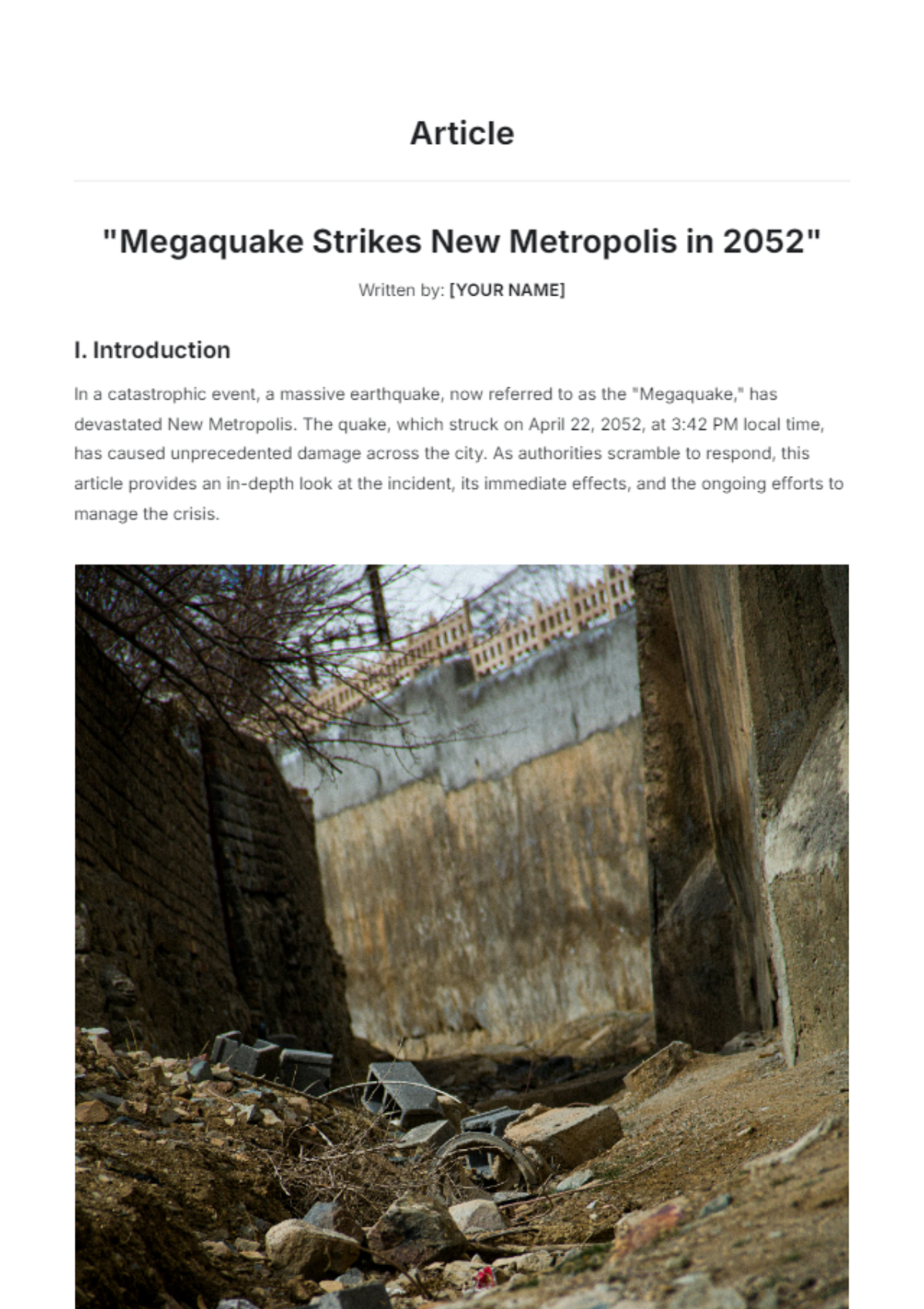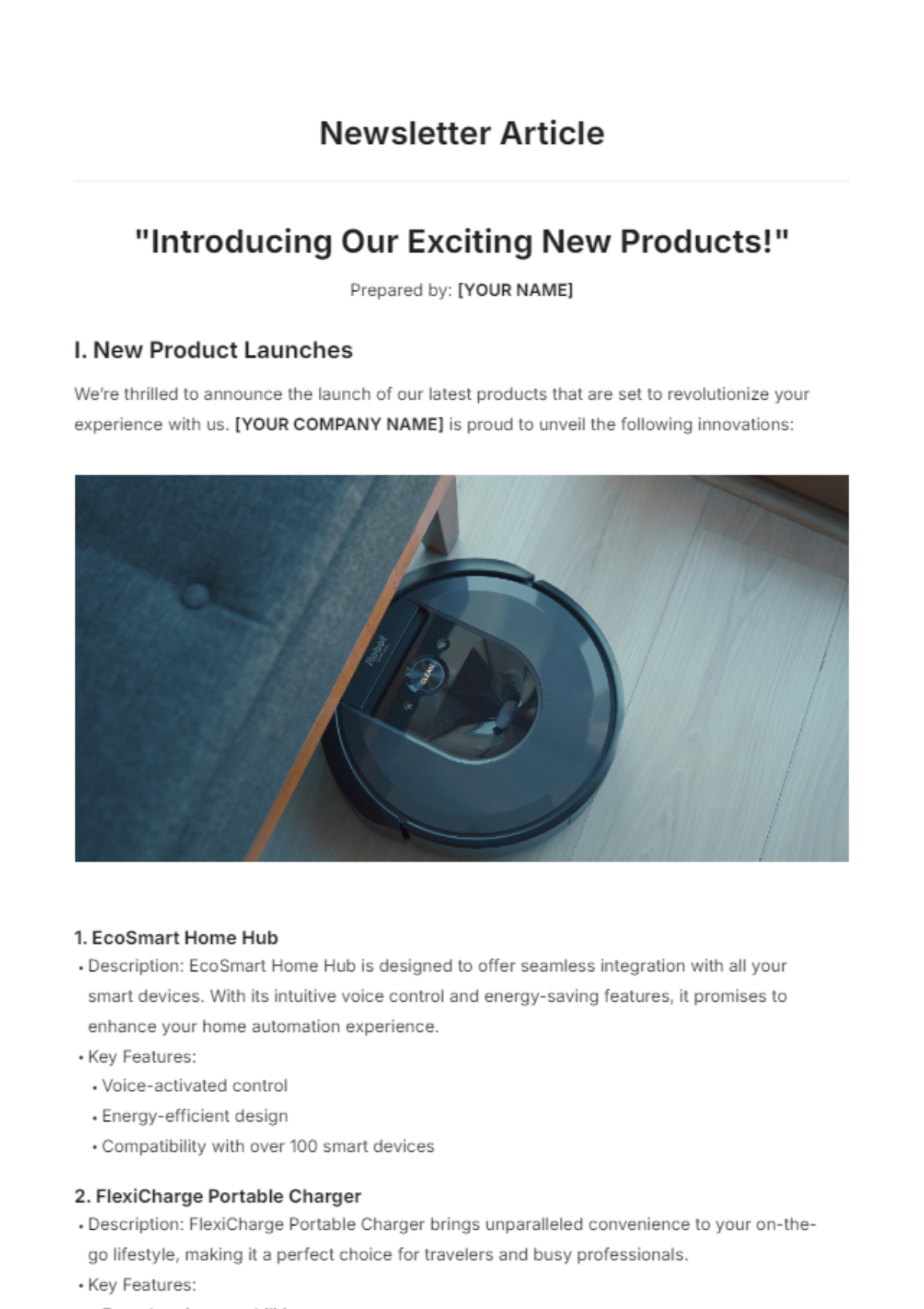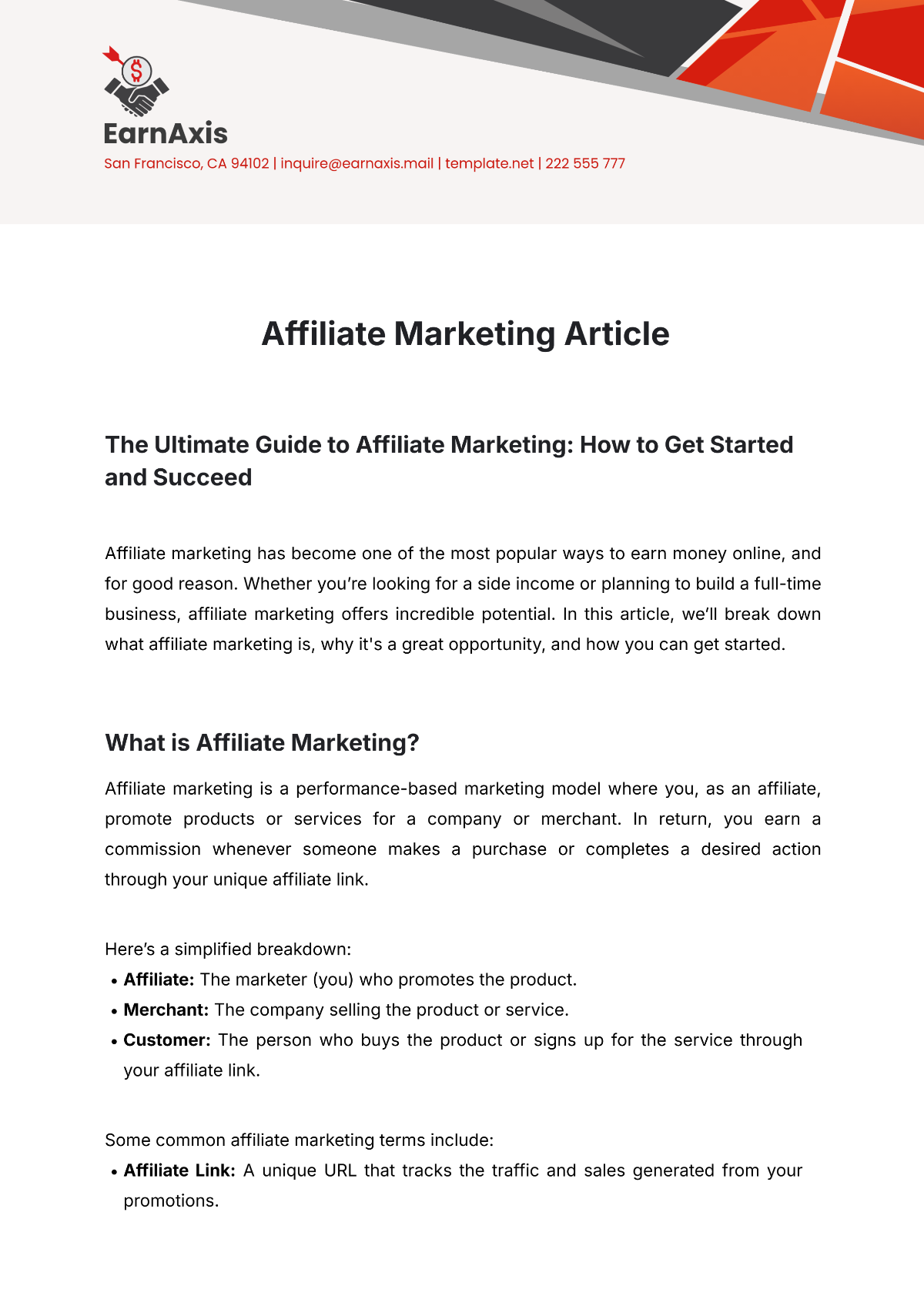BASIC ARTICLE
"Basic Article Writing Foundations"
Written by: [Your Name]
Introduction
In the bustling world of content creation, mastering the art of article writing is crucial for any aspiring writer. This guide serves as a foundational blueprint for individuals like [Your Name], who seek to enhance their writing skills and produce compelling content.

Whether you're crafting a blog post, a journalistic piece, or an informative article, understanding the basic elements can dramatically improve your writing efficiency and impact.
I. The Importance of a Strong Opening
A. Capturing Attention
Statistical Hook: Start with a surprising statistic relevant to your topic. Below is an example.
Did you know that [Insert Statistic] percent of readers only skim articles online?
Anecdotal Hook: Share a brief, engaging story to draw readers in. "Once upon a time in [Your City]..."
Question Hook: Pose a provocative question to pique curiosity. "Have you ever wondered why [Insert Topic] is so important?"
B. Setting the Tone
Establish the voice and mood of your article early on. Decide whether your tone will be formal, informal, humorous, or serious based on your target audience.
II. Structuring Your Content
A. Creating a Roadmap
Introduction: Briefly introduce the main topic and what the reader can expect to learn.
Body: This section is the meat of your article, where you delve into details.
Subsection 1: [Topic Detail 1]
Subsection 2: [Topic Detail 2]
Subsection 3: [Topic Detail 3]
Conclusion: Summarize the main points and restate the importance of the topic, encouraging further thought or action.
B. Enhancing Readability
Use of Bullet Lists: Ideal for listing examples, tips, or quick facts.
Numbered Lists: Use these for steps, instructions, or points that need to follow a specific order.
Checklists: Provide a checklist when outlining processes or to-dos for the reader, such as "[Your Checklist Item 1], [Your Checklist Item 2]."
III. Utilizing SEO to Maximize Reach
A. Keyword Optimization
Primary Keyword: "[Primary Keyword]"
Secondary Keywords: "[Secondary Keyword 1], [Secondary Keyword 2]"
Include these keywords strategically throughout the article without compromising the natural flow of content.

B. Meta Description and Tags
Meta Description: Craft a compelling meta description with your primary keyword. This description should summarize the article's content in about 160 characters.
Tags: Add relevant tags like "[Tag 1], [Tag 2]" to help categorize your article and improve search visibility.
Conclusion
Writing an effective article is not just about stringing words together; it involves strategic structuring, engaging storytelling, and smart SEO practices.

By following the steps in this article, [Your Name] can create articles that not only captivate readers but also perform well in search engine rankings. Remember, the key to success in article writing lies in continuous learning and adapting to new writing trends and audience preferences.
For more detailed guides and expert advice, feel free to contact [Your Name] at [Your Company Email] or [Your Company Number]. You can also visit [Your Company Website] or follow [Your Company Social Media].

















































